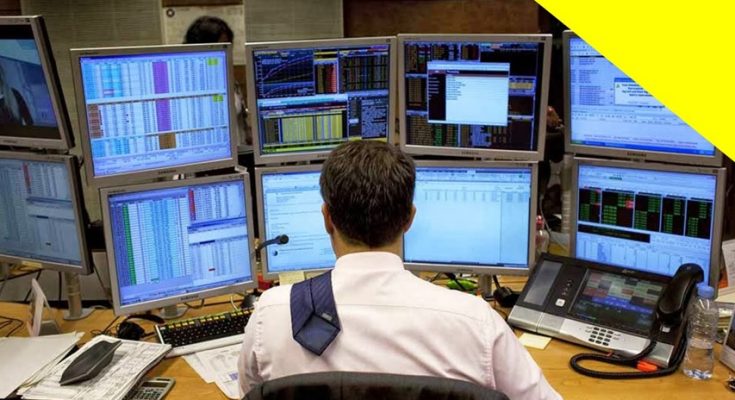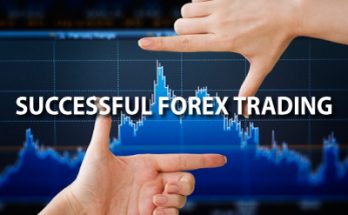What is a professional Forex trader?
A professional Forex trader is someone who uses price movement in the Foreign exchange currency market to make profit. The aim of any Forex trader is to win as many trades as possible and also to maximize those winning trades. A professional Forex chart technician uses price charts to analyze and trade the market. By trading with an EDGE in the market, professional traders can put the odds in their favor to successfully trade price movement from point A to point B.
Caution: Forex trading is not a ‘get-rich-quick’ scheme and it is more difficult to make money in Forex than what most popular Forex system-selling websites would have you believe. To trade profitably we must not only have winning trades, but we must also cut our losing trades short so that our winners out-pace our losers. You see, losing is an enviable part of trading the Forex markets, and you must learn to lose properly by taking small losses relative to your winners. This means you must A L W A Y S trade with a stop loss on E V E R Y trade you take and make sure the dollar amount you have at risk is an amount you are 100% comfortable with losing.
Professional Forex price-chart traders have a winning edge which is developed via Technical Analysis (more on this in Part 4). There are also Fundamental Analysis traders and traders who use a combination of both analysis techniques; we will discuss all of these later.
A professional Forex trader understands that reading a price chart is both art and skill, and as such, they do not try to mechanize or automate the process of trading as each moment in the market is unique, so it takes a flexible and dynamic trading strategy to trade the markets with a high-probability edge.
• How do pro traders trade the Forex markets?
There are many different trading strategies and systems that pro traders use to trade the markets with, but generally speaking, professional traders do not use overly-complicated trading methods and rely mainly on the raw price data of the market to make their analysis and predictions. To be comprehensive, I wanted to give you guys a brief overview of all the primary different styles and ways people trade the Forex market:
Automated / Robot Trading: Software-based trading systems, also known as forex trading robots, are created by converting a set of trading rules into code that a computer can make use of. The computer will then run this code via trading software that scans the markets for trades that meet the requirements of the trading rules contained in the code. The trades are then executed automatically via the trader’s broker.
 Discretionary Trading: Discretionary Forex trading depends on a trader’s ‘gut’ trading feel or discretionary trading skill to analyze and trade the markets. Discretionary trading allows for a more flexible approach than automated trading but it does take a certain amount of time to develop your discretionary trading skill. Most professional Forex traders are discretionary traders because they understand the market is a dynamic and constantly flowing entity that is best traded by the human mind.
Discretionary Trading: Discretionary Forex trading depends on a trader’s ‘gut’ trading feel or discretionary trading skill to analyze and trade the markets. Discretionary trading allows for a more flexible approach than automated trading but it does take a certain amount of time to develop your discretionary trading skill. Most professional Forex traders are discretionary traders because they understand the market is a dynamic and constantly flowing entity that is best traded by the human mind.
Technical Trading: Technical trading, or technical analysis, involved analysis of a market’s price chart for making one’s trading decisions. Technical analysis traders use price patterns or ‘technical signals’ to trade the market with an edge. The common belief amongst technical analysis traders is that all economic variables are represented by and factored into the price movement on a price chart.
Fundamental Trading: Fundamental trading, or news trading, is a trading technique wherein traders rely heavily on market news to make their trading analysis and predictions. Fundamental news does ‘drive’ price movement, but often times the market will react differently than what a particular news release would imply due to the fact that market participants often buy on expectations of future events and sell once the reality of said future event occurs. This is another main reason many pro traders rely more heavily on technical analysis than fundamental analysis, although many do use a combination of the two.
Day Trading:Â Traders who day-trade the Forex market are in and out of the market within one day. This means they typically buy and sell currencies over a very short period of time and they may enter and exit numerous trades in one day.
Scalping: Scalping is similar to day-trading but it relies on more frequent and shorter-term trades than even day-trading does. It is a trading style that refers to jumping in and out of the market many times a day to ‘scalp’ a few pips here and a few pips there, generally with little regard for placing logical stop-losses. Scalping is generally not recommended by experienced / pro traders because it is essentially just gambling.
Swing Trading / Position Trading:Â This style of trading involves taking a short to mid-term view on the market and traders who swing trade will be in a trade anywhere from a few hours to several days or weeks. Swing or position traders are generally looking to trade with the near-term daily chart momentum and typically enter anywhere from 2 to 10 trades per month, on average.
Range Trading: Range trading involves trading a market that is consolidating between obvious support and resistance levels. By watching for trading signals near the support and resistance boundaries of the trading range, traders have a high-probability entry scenario with obvious risk and reward placement.
 Trend Trading: Trend traders are traders who wait for the market to trend and then take advantage of this high-probability movement by looking for entries within the trend. An uptrend is considered to be in place when a market is making higher highs and higher lows, and a downtrend is in place when a market is making lower highs and lower lows. By looking for entries within a trending market, traders have the best chance at making a large profit on their risk. Traders who continually try to trade against the trend by trying to pick the top and bottom of the market, generally lose money quite quickly. Professional Fx tradersare largely trend-traders.
Trend Trading: Trend traders are traders who wait for the market to trend and then take advantage of this high-probability movement by looking for entries within the trend. An uptrend is considered to be in place when a market is making higher highs and higher lows, and a downtrend is in place when a market is making lower highs and lower lows. By looking for entries within a trending market, traders have the best chance at making a large profit on their risk. Traders who continually try to trade against the trend by trying to pick the top and bottom of the market, generally lose money quite quickly. Professional Fx tradersare largely trend-traders.
Counter-trend Trading:Â Trends do indeed end, and if you are a savvy and skilled trader you can successful trade a counter-trend move, but this should not be tried until trend-trading has been mastered as counter-trend trading is inherently more risky than trend-trading and there can be many false tops or bottoms in a trend before the real one emerges.
Carry Trading: Carry trading, or simply ‘the carry trade’ as it is called, is the strategy of simply buying a high interest-rate currency against a low interest-rate currency and holding the position for what is usually a long period of time. Forex brokers will pay traders the interest rate difference, or ‘swap’, between the two currencies for each day the position is held. The trick here is that higher-yielding currencies are susceptible to large sell-offs if the market loses risk appetite since these currencies are generally considered riskier than safe-haven currencies like the U.S. dollar or Japanese yen, so it’s a good idea to trail your stop loss up to lock in profit as the carry trade moves in your favor.
• Professional Forex traders vs. amateur Forex traders
Professional Forex trading might seem like something of an elusive or difficult goal for those of you struggling to trade profitably or just beginning to trade. But, there are a few key differences between pro traders and amateur traders that you should be aware of to help you improve your trading or get started on the right track if you are a newbie:

• The important role of Banks in Forex trading
Banks play a very important role in FOREX trading. In fact, most of the market plays against larger banks, hedge funds and big-money players. Commercial banks (such as Deutsche Bank and Barclays) provide liquidity to the Forex market due to the trading volume they handle every day. Some of this trading represents foreign currency conversions on behalf of customers’ needs while some is carried out by the banks’ proprietary trading desk for speculative purpose. The bottom line is that we retail Forex traders are small-change compared to the bigger players like commercial banks, hedge funds, and other big players. We can profit from the moves these big players cause in the market by finding our own edge in the market and trading it with discipline.



